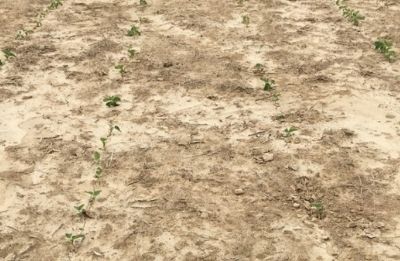 Image 1: Soybeans emerging from a crusted soil layer (Source: GROWMARK, Inc.)
Image 1: Soybeans emerging from a crusted soil layer (Source: GROWMARK, Inc.)
- Early soybean planting has potential to bring many benefits in terms of maximizing yields, but higher risks of emergence problems are possible.
- Scouting fields to check for emergence issues should be done early and often, to allow ample time for replanting, if deemed necessary.
- A few factors that can lead to soybean emergence issues are cold injury, soil crusting and herbicide injury.
Maximizing soybean yields begins with planting quality, treated seed early to help get the crop off to a healthy, uniform start. Early planted soybeans are often exposed to temperature fluctuations and cool, wet soils which cause emergence issues. In this article, we will review some of the factors that can result in soybean emergence issues.
Soil Crusting
Crusting occurs after a heavy rainfall event “seals” off tilled soil, and warm temperatures and sunshine dry out the top layer, resulting in a hard soil crust (Image 1). Soil crusting doesn’t happen in only heavily tilled fields, but any tilled field can be susceptible to soil crusting, depending on soil clay content and percent organic matter. No-tilled fields are less prone to soil crusting, but crusting can still occur in the row due to soil disturbance by the planter. Prevention of soil crusting can be mitigated by not planting ahead of a heavy rainfall event. If soil crusting occurs after planting, rainfall or lightly hitting the crust with a rotary hoe, will break/soften that crust. Planting a heavier seeding rate will also mitigate the issue of stand loss due to crusting, as more seedlings will be emerging and work together to break through the soil crust. When scouting, always check heavier clay soils with high organic matter first, as they are more prone to heavy crusting.
Herbicide Injury
Delaying the spread of herbicide resistance requires using multiple herbicide sites of action for weed management. Residual herbicides used to manage waterhemp, can be injurious early in the spring when environmental conditions rapidly change. Commonly used preemergence soil residuals for waterhemp management break out into 4 sites of action: Microtubule inhibitors (Group 3), Photosystem II Inhibitors (Group 5), PPO Inhibitors (Group 14), and Long Chain Fatty Acid Inhibitors (Group 15) herbicides. Microtubule inhibiting herbicides like pendimethalin and trifluralin are more injurious when soil conditions are cold and wet. Injury potential also increases under slow soybean growing conditions. Photosystem II inhibiting herbicides like metribuzin become more injurious when soil pH is above 7.5, due to more active ingredient present in soil solution for uptake by the crop (Image 2). PPO inhibitors like sulfentrazone and flumioxazin are the “work horse” herbicides for waterhemp, but they can cause injury early in the spring when cold temperatures and wet soils are prevalent. These conditions cause the plant to not be able to metabolize the herbicide effectively and efficiently. Long Chain Fatty Acid inhibitors like acetochlor and metolachlor are the least injurious of herbicides and typically cause superficial crinkling and heart-shaped leaflets. The soybeans grow out of this superficial injury quickly.

Image 2: Metribuzin injury on a soybean leaf (Photo- Dr. Aaron Hager- U of I Extension)
Cold Soils
Planting into cold, damp soils will set the crop up for challenges from the start. Soybeans go through two phases prior to germination; the imbibitional phase followed by the osmotic phase. During imbibition, there is rapid water uptake within the 24 hours after planting the seed. Following the imbibition phase is the osmotic phase, a much slower uptake of water. Soils that are colder than 50°F at the time of planting and are followed by a cold rainfall event, are more conducive to chilling injury than warmer soils. If soybeans imbibe cold water within 24 hours after being planted, the result can be reduced stand and reduced vigor. If soybeans absorb cold water during the osmotic phase, the effect will be slow emergence. Typically, a stand of 100-120,000 plants/A will optimize yield, however, if the stand is uniformly-spaced a stand as low as 73,000 plants/A will provide 90% or more of maximum yield. Moral is, weigh out the cost of replanting, time, weather forecast and the yield potential of the newly planted seed.
Over the next couple of weeks, soybean fields should be scouted for early season emergence issues to allow ample time for replanting, if needed. As we push into May, some of these issues are less likely to occur with warmer, more stable temperatures. If you have questions, contact your local FS Crop Specialist.
Related categories: soybeans, crop management, planting, plant population, emergence, soil moisture, temperature